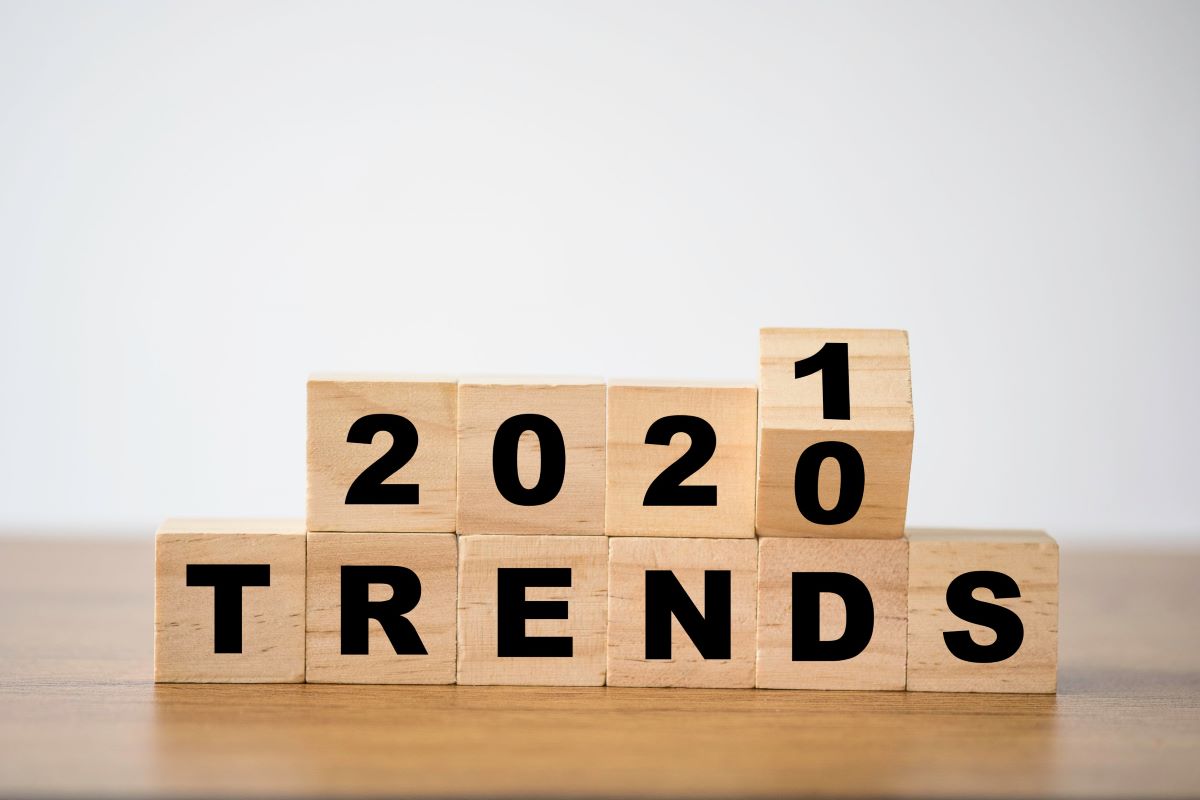9 comms predictions for 2021
Be prepared for a year of digital domination, concrete DE&I action, and livestreamed events.

2020 has been a year like no other.
Even the Oxford English Dictionary is at a loss for words to describe it. If we could wipe it off the calendar and start again, most of us probably would. So, the sooner we finish our 2020 roundup posts and 2021 forecasts, the quicker we can turn the page, right?
Seriously, not all the news is bad. The year of COVID-19, Black Lives Matter, assorted climate disasters, and a historically divisive presidential contest has accelerated existing trends. It also opened new opportunities for professional communicators. Here are some observations on what we can expect in 2021.
Work will be fully digital.
The pandemic fueled the digital transformation already underway in most business sectors. Gartner predicts that an “anywhere operations model will be vital for businesses to emerge successfully from COVID-19” in 2021. This is particularly true for marketing, brand and corporate communications. Remote work is now a permanent option for many office employees, and all internal and externally focused campaigns must be fully digital. The rush to digital operation has obvious ramifications, including a greater emphasis on digital security, and automation of repetitive tasks that frees up humans for higher-touch communications.
Livestream goes mainstream.
2020 brought innovation in communications tactics, especially the use of live/streaming video platforms like Twitch. We’ll see lots of new ideas and platforms for customer and employee communications. One likely trend will be a continued mainstreaming of tactics like live digital events, podcasting, and real-time chat for routine programs. The future of event marketing growth will be in hybrid happenings that attract both physical and virtual participants and attendees.
DE&I becomes mission-critical.
There are no more excuses. No more talk of empty pipelines or hiding behind a revolving door of diverse candidates whose needs aren’t met by the organization. Agencies and clients alike need to walk the talk when it comes to Diversity, Equity, and Inclusion. Promises and pledges that were made in a reactive way in June of 2020 won’t be forgotten in 2021.
The stakes rise for employee engagement.
For similar reasons, stakeholder communications will become more important, but nowhere more than for than the new, distributed workforce. With remote work and fully digital programming becoming common. corporate communications will be challenged to involve and engage employees, with an emphasis on mental health and wellness, team-building, and creativity. It will require new technology tools as well as unprecedented involvement on a strategic level by corporate communications pros.
Our work will be bifurcated.
Repetitive tasks and back-end office functions will be more automated. COVID proved that we don’t need constant travel any more than we need to deposit paper checks at the bank. At the same time, the pressure will grow for highly personalized media, customer and stakeholder communications. For example, content campaigns will be informed by customer data and therefore must focus on topics that truly resonate with specific segments, based on where and how they consume it. This means quarterly or even monthly adjustments, because few things are more valuable than agility in communications.
Marketing and corporate communications will overlap.
There’s always been a tension between marketing and PR/communications within large companies. This is because the two compete for budget, and because marketing is seen as a proactive discipline responsible for driving growth, while communications is considered more defensive, involving crisis and reputation management. The smartest companies will ensure that the two work in tandem to meet customer expectations for values-4based marketing and communications.
PR must communicate values, not just message points.
Of course it’s not new, but all evidence points to continued pressure on brands to align their marketing and communications with corporate values even beyond diversity, equity and inclusion. 2020 has seen a great deal of norm-shattering, and only some of that is for the better. We’re beset with deep divisions over culture, politics, and even the nature of objective fact. The loss of trust in institutions means that businesses will play a larger role in expressing brand and corporate values than ever before.
New social media platforms drive influencer culture.
A year ago, who would have thought Charli D’Amelio would hit 100 million TikTok followers by November? Actually, anyone following influencer culture probably should have. Sure the pace of social influencer growth has accelerated; on YouTube it took 14 years for a single channel to reach 100 million subscribers. Yet social media usage rose sharply during the lockdown periods after COVID-19. It’s a sure bet that trend will continue, and that by this time next year, fresh names will hit new milestones. Brands that catch rising stars as new audiences emerge will benefit.
Innovation still rules.
It never went away, of course. But big ideas that drive media attention, bridge the virtual and physical, engage customers and employees, and extend marketing budgets will be more important than ever in a fractured and fragmented attention economy.
Dorothy Crenshaw is CEO of Crenshaw Communications. Read more of her work on the Crenshaw Communications blog.






